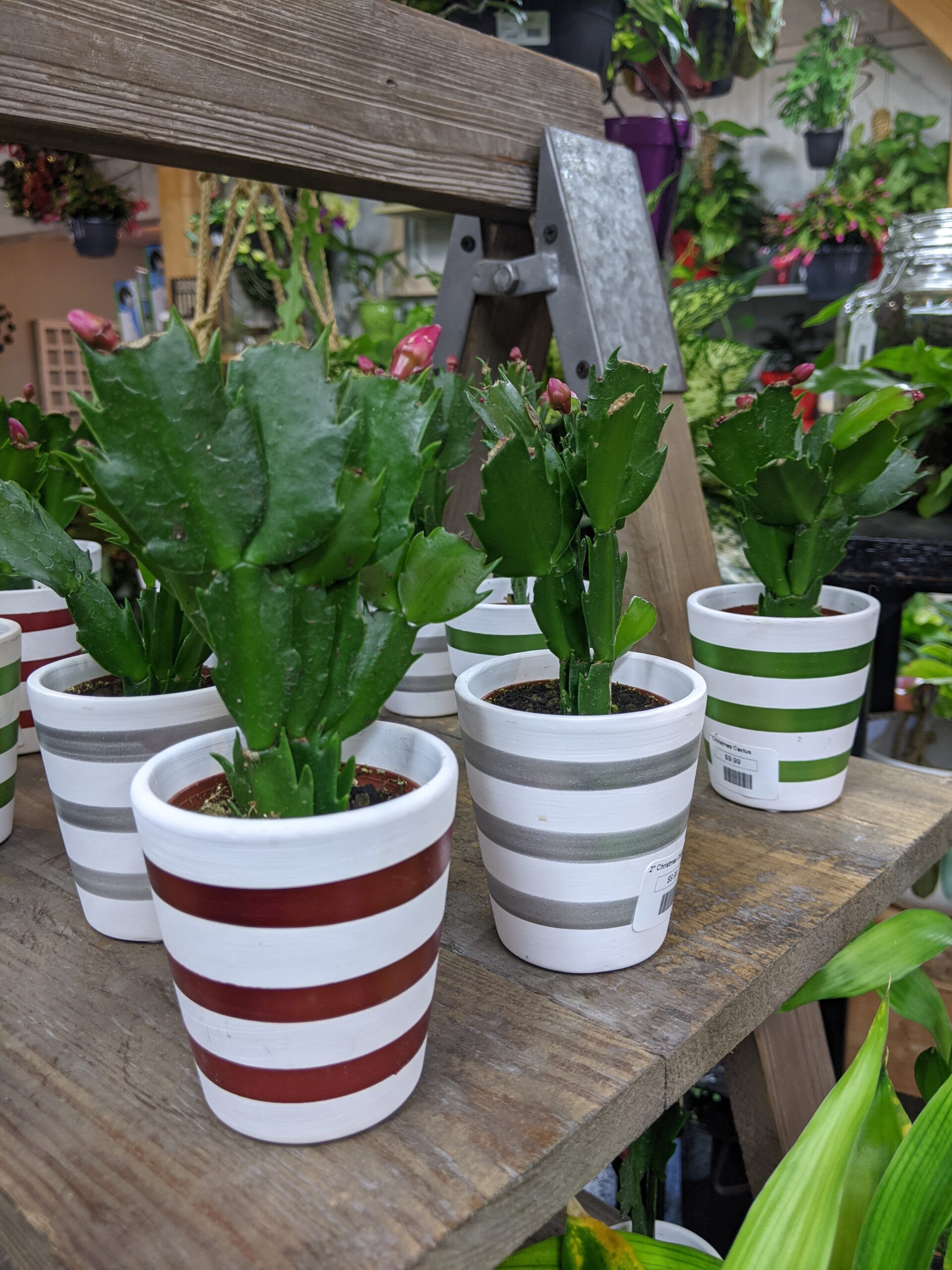Watering questions are among the most frequently asked at the garden center. As much as we wish there were a blanket answer, such as water every Tuesday, unfortunately there are several factors that go into knowing when your houseplant needs water. Here, we will offer some tips on this sometimes confusing topic.
Know your plant. Not every variety of plant requires the same amount or frequency of water. For example, a succulent thrives in dry soil. Desert type plants have adapted to store water for times of drought and only need occasional soaking, whereas an aglaonema (which is a tropical) requires its soil to be consistently moist. An easy mistake to make is waiting for a plant to wilt before you water it. This would be like us running a 10k and only drinking water after we get home. Tropical plants typically come from wet or humid environments where they have access to consistent moisture. When their roots dry out they begin to shrivel and die. Receiving water only when they are parched puts excess stress on the plant. The roots work feverishly to soak up moisture and stop putting their energy into leaf production. Watering with this method will eventually lead to a dead plant.
Know your soil. Take note of the soil that the grower uses in the nursery pot. This can be a clue as to the plants water requirements. Some soils are light and may contain bark pieces that allow for rapid drainage. This type of mix is used for plants who can’t tolerate constantly wet roots. Others may use mixes that contain peat which holds water for a longer period of time. Knowing the right mix is important if you are going to transplant into a larger pot.
Know your environment. Watering is also determined by the environment in your home. Temperature and humidity vary greatly throughout the year and can fluctuate even more if windows are open rather than closed with the heat or A/C running. Plants positioned near heating and cooling vents will dry out faster which might mean you need to water more often. Plants located in a bathroom where there may be multiple steamy showers happening per day, might require less frequency.
Know your water. Today, most homes use public water which in the long term may not be good for your houseplants. The two major culprits are chlorine and salt which will do damage to plant roots over time. One option is to use distilled water, which can get expensive or, try this simple tweak. Fill a container with water and let it sit without a lid for 24 hours. Any chlorine will evaporate and most of the salts will settle to the bottom of the container. Use the water up to the last few inches at the bottom and pour the rest down the drain.
Know your method. How you water can be just as important as when you water. For example, plants such as Succulents and African Violets need to be watered in a tray from the bottom. Violet leaves are very porous and will rot quickly if water sits on their furry leaves. The small nooks and crannies of a succulent hold pools of water which will decay its outer layer quickly. Plants that prefer consistently moist (not soggy) soil do well sitting on a saucer of wet gravel where they can absorb the humidity. While there are do’s and don’ts for specific plants, the vast majority of houseplants fall into the category of ‘a good soaking, and time to drain completely before they sit back in their saucer’.
We hope these five points will serve as a guide to help demystify the watering process but we are always available to answer your specific questions.

